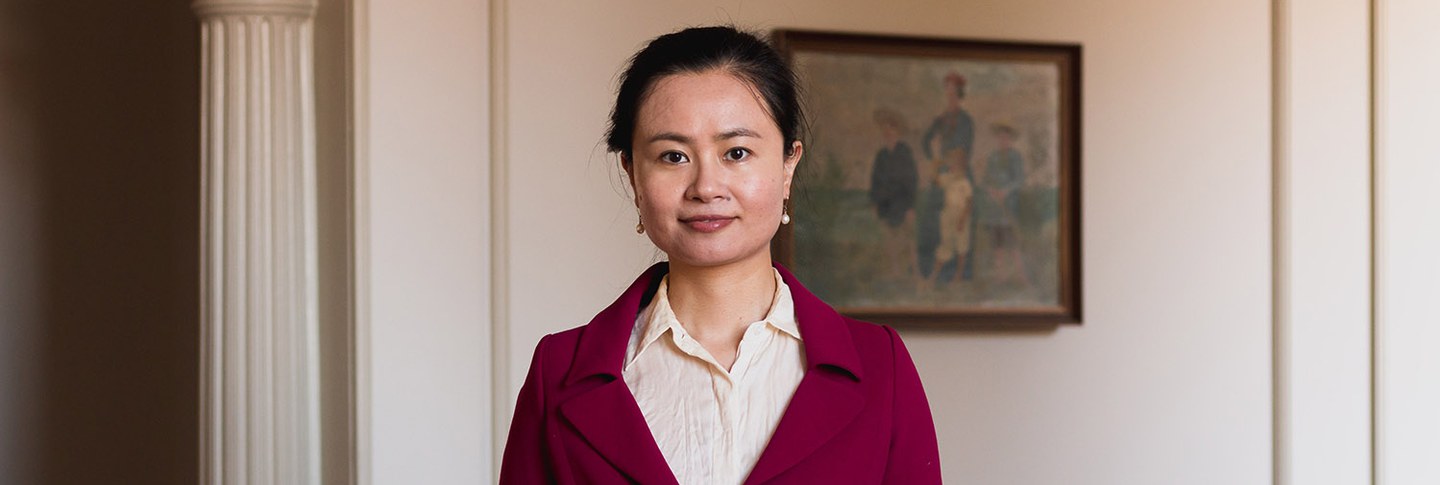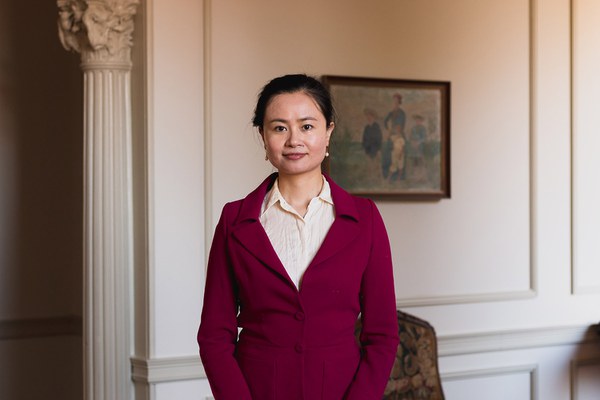Yingzhi Zhao, senior lecturer of premodern Chinese literature at Kyoto University, was a 2018–2019 fellow in Garden and Landscape Studies. Her research report, “Ruins, Fragments, and Dreamscape: Spatial Discourse and Spatial Imagination in Early Qing Literature and Culture,” reconsidered the aesthetics of 17th-century Chinese literature and landscapes against the backdrop of sociohistorical circumstances.
Q&A with Yingzhi Zhao
Why was the “tree nest” you described in your talk so distinct in 17th-century China?
The tree nest was unprecedented—the only example I have ever seen in literary texts about actually building a pavilion on a treetop. A lot of Chinese literati thought about living on treetops as free birds, but that was just their imagination. Poet Mao Xiang was the only one who realized the fantasy.
According to Mao’s records, dozens of men could have a party under the shade of a particular tree in his hometown. This tree had many branches that looked like bridges, allowing Mao and his friends to climb up to the pavilion he built on the treetop without using chains or ladders. Because the tree was next to a river, these men imagined themselves to be like both birds and fish, which in Chinese literature symbolized freedom and independence. They enjoyed this illusion of being both.
Mao wrote that the pavilion was shaped like a crabapple flower, because according to legend, sages were said to live in crabapple trees. He wanted to remind people that he was just like a sage in ancient times. Mao invited his friends to have parties in the pavilion where they drank wine, then composed poems. They must have had a great time in the pavilion.
If there had been installation art in the 17th century, this tree nest would have been very successful. It was a like a stage where everyone’s wish to become a recluse could be enacted. In late imperial China, the number of well-educated men surpassed the number of men who could find civil posts in the government. They had to choose an alternative to reconcile themselves with politics and society, so many claimed to become recluses. Reclusion is a very important theme in Chinese literature. Living on the treetop is a gesture of being a respectable recluse, so this idea of the tree nest was very popular among the contemporary literati.
How did political upheaval change the meaning of the tree nest?
The mid-to-late 17th century is a very interesting and vibrant period for Chinese literary and cultural history. What happened was a change of regime. The Ming dynasty, built by Han Chinese, was destroyed in 1644 by peasant rebels. The politics of the late Ming were very corrupt and there were several famines, so peasants had no choice but to fight to subvert the dynasty. The Manchus, a small tribal group from the northern part of China, took advantage of that to conquer the Chinese people and territory.
The characters I focus on in my research are poets, painters, connoisseurs, literary critics. Most of them were Han Chinese from the southeast, the most developed and cultivated area of China in the 17th century. In retrospect, Mao Xiang thinks back on his life in the late Ming, and the good life he spent in the tree nest pavilion, as a dream. Many Ming loyalists were involved in resistance to the Manchus from the 1640s to 1660s, but their efforts failed, so many of them withdrew to the personal world to paint and write poems.
In Mao’s own writing and in many of his friends’ poems, they emphasize this idea of “no place.” “No place” means a place that doesn’t belong to the Qing dynasty. In premodern China, all land was owned by the emperor. Mao wants to show that he keeps his distance from the contemporary sociopolitical order, so he suggests that he’s not on the new Qing emperor’s territory when he’s on the tree nest, floating in midair. The tree nest pavilion symbolizes this idea of “no place,” a sort of an enclave not under the sovereignty of the Qing dynasty, just as the Vatican is not under the sovereignty of Italy.
What materials held at Dumbarton Oaks most intrigued you?
I was looking at books in the Rare Book Collection and found several very interesting ones. For example, I found two volumes of Emperor Qianlong’s poems on two of his garden estates. Also, in the Image Collections and Fieldwork Archives, I found a collection of photos of two Suzhou gardens, taken in 1926 by the American writer Florence Lee Powell. The pictures she took are very different from what I have seen in those two gardens today. I plan to write an article on what the gardens looked like almost a century ago, giving landscape architects in China a better sense of their older forms.
Julia Ostmann is postgraduate writing and reporting fellow at Dumbarton Oaks. Photo by Elizabeth Muñoz Huber, postgraduate digital media fellow.

